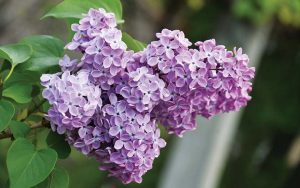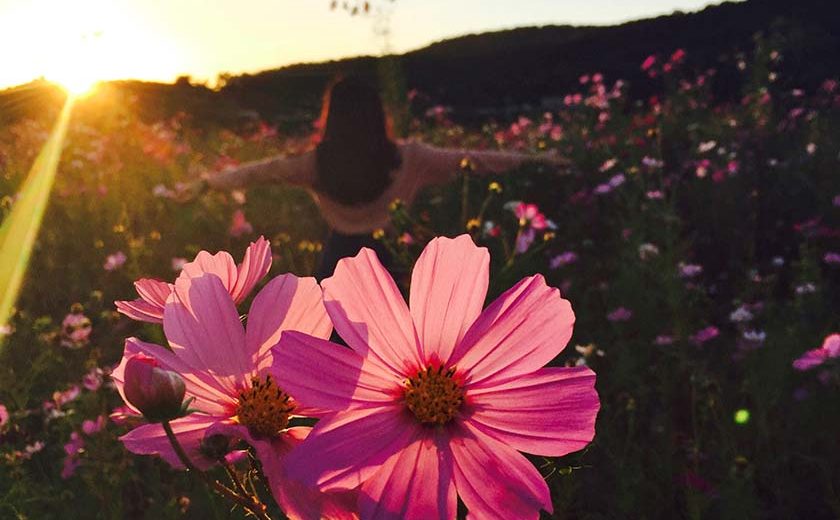Every Valentine’s Day red roses are the special gift for the occasion, for they signify true love in a beautiful, elegant way. As beautiful and fragrant as they are, most of the time, those stalks or bouquets of roses end up being thrown away after it has withered.
What if we told you that you could pick out the petals and toss them into your salad instead, and that they and many other flowers add nutritional value to your diet?
The Less Popular Benefits Of Flowers
Flowers are not just pretty to look at, but they have been proven to be nutritious to the human body. Most of them are rich in Vitamin C, where else some of them also boasts other nutrients such as potassium, lutein, zeaxanthin, calcium, iron, phosphorus.and Vitamin E as well, among other important nutrients.
The most popular way we benefit from flowers are by brewing them into teas. Chamomile, dandelion, chrysanthemum, hibiscus, marigold teas have been popular throughout history as calming, healing drinks. However, flowers have way more to offer us than just being made into teas, for many of them can be consumed as food.
Consuming flowers is not as uncommon as we think and people have been eating flowers of all kinds from thousands of years ago. The calendula, for example, a member of the marigold family, was traditionally valued for its bright yellow blossoms. The Romans used Calendula mixed with vinegar to season their meat and salad dishes. Calendula blossoms in wine were also found to be helpful in soothing indigestion. According to historians, Henry VIII, who was King of England from 1509 until his death, ate dishes of daisies to relieve pains from stomach-ulcer pain.
Edible flowers have been gaining popularity as a health food and its presence in the culinary world too cannot be ignored. You see them in salads, on cake decorations, as garnishes for dishes, etc.
Safe Consumption Of Flowers
Just as you would pick and choose your other foodstuff carefully, if you’re planning to include flowers into your diet, there are a few things you should keep in mind. follow these tips for eating flowers safely:
- Only eat flowers you know to be consumable — if you are uncertain if a certain flower can be eaten or not, research on it and find out first.
- Be sensitive to the fact that flowers from the florist or nursery are probably grown using pesticides or other chemicals. Hence, if you plan to add flowers to your diet, either buy organic or grow them yourself
- Do not eat roadside flowers or those picked in public parks. Both may have been treated with pesticide or herbicide, and roadside flowers may be polluted by car exhaust.
- Eat only the petals – remove pistils and stamens.
- If you suffer from allergies, introduce edible flowers into your diet one type at a time, and do it gradually, as they may exacerbate allergies.
- To keep flowers fresh, place them on moist paper towels and refrigerate in an airtight container. Some will last up to 10 days this way.
- You can use ice water to revitalize limp flowers.
A Dozen Flowers You Can Eat
- Angelica: Depending on the variety, the Angelica flowers range from pale lavender-blue to deep rose and they have a sweetish, licorice-like flavor.
- Basil blossoms: These come in a variety of colors, from white to pink to lavender with flavors is similar to their leaves, but milder.
- Calendula: A popular flower in the culinary world, calendula blossoms are peppery, tangy, and spicy — and their vibrant golden color adds dash to any dish.
- Carnations: The petals are sweet, once trimmed away from the base. The blossoms taste like their sweet, perfumed aroma.
- Chamomile: Small and daisy-like, the flowers have a sweet flavor and are often used in tea. People who have ragweed disease may be allergic to chamomile.
- Dill flower: The yellow blossoms have a delicate yet distinct flavour, much like the herb’s leaves.
- Fuchsia: Bright and beautiful, it has a tangy make a beautiful garnish for cakes, desserts, etc.
- Hibiscus: Our very own national flower contains antioxidants that help prevent cholesterol deposits and aids liver disorders.
- Jasmine: These super-fragrant blooms are used in tea; you can also use them in sweet dishes, but also sparingly or its fragrance will be quite overpowering.
- Lavender Sweet, spicy, and perfumed, the flowers are a great addition to both savory and sweet dishes.
- Mint flowers: The flowers are actually quite minty, no surprise there… and their intensity varies among varieties
- Lilac: These blooms are lovely to look at but are found to be a tad pungent. However, the floral citrusy aroma translates to its flavor as well.

If you’re using flowers from your own garden, remember to pick them early in the morning after the dew has dried and just as they are beginning to open – this is when they are the most flavorful.
Here are some suggestions on how you can consume flowers:
- Baked into biscuits or muffins
- As edible cake decorations
- As flavorings for butter
- With pancakes
- Infusing into salad oils
- With pasta
- As flavoring for vinegars
- Use in fruit punches or in teas
- In soups
- In salads
- In sandwiches
Make your own flower honey
Ingredients:
- 1 cup flower petals
- 1 pound honey
Method:
- Use lavender or rosemary blossoms for a stronger honey, or rose petals or other more floral blooms for a more fragrant flavor
- Add the flower petals to a reusable tea bag or make a bundle in cheesecloth and add to honey. Leave in a bright, sunny place for a week, check flavor
- Leave longer for a more pronounced flavor. When ready, remove the petal bag and your flower honey is ready for use.
Three unique ideas for flower consumption:
- Hibiscus and daylily blooms may be battered and fried, or stuffed and used as “cups” to hold tuna or egg salad.
- Roses can be used to line a cake pan to add a lovely flavour to your baking
- Nasturtium blooms can be stuffed with herbed cream cheese for excellent hors d’oeuvres.


